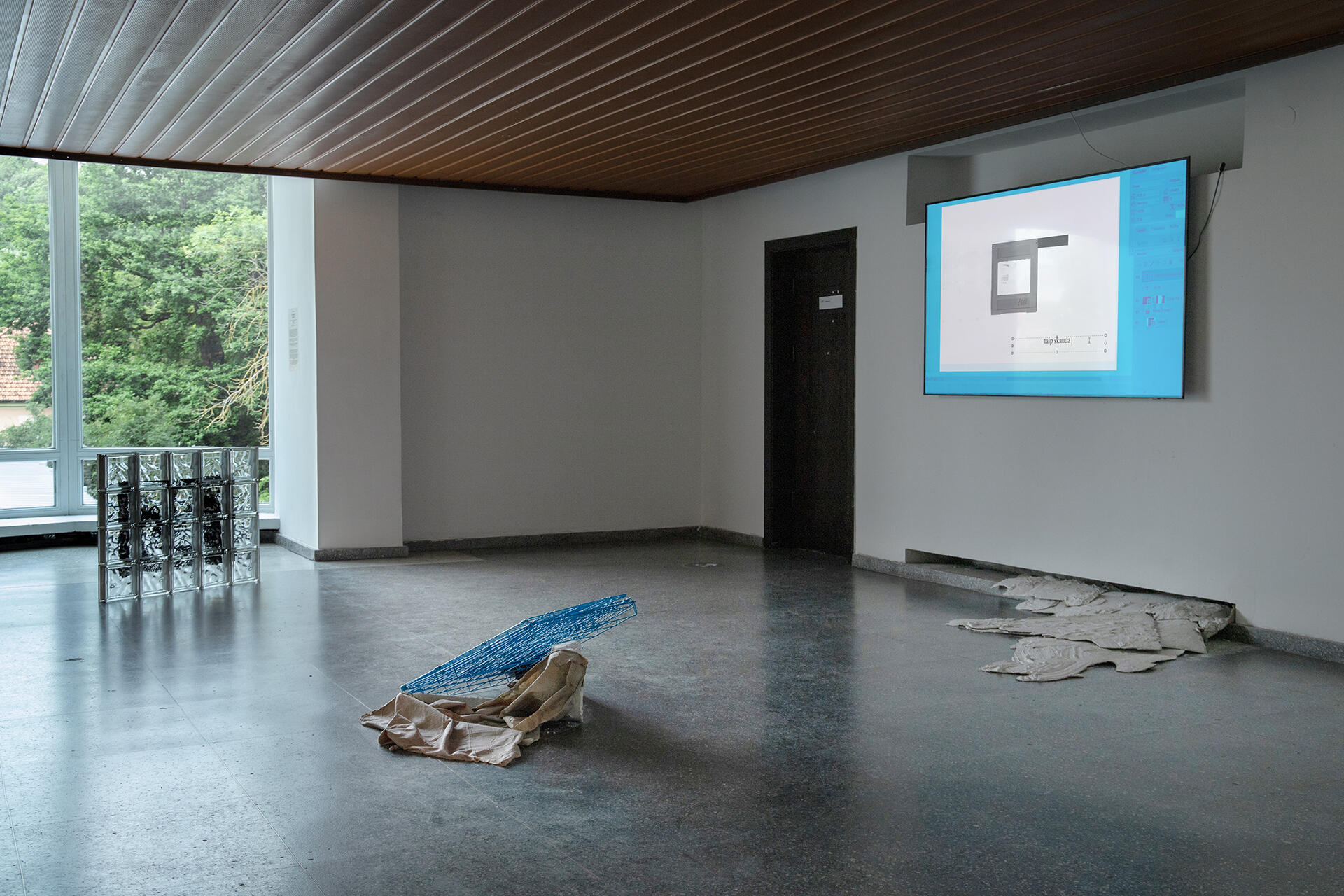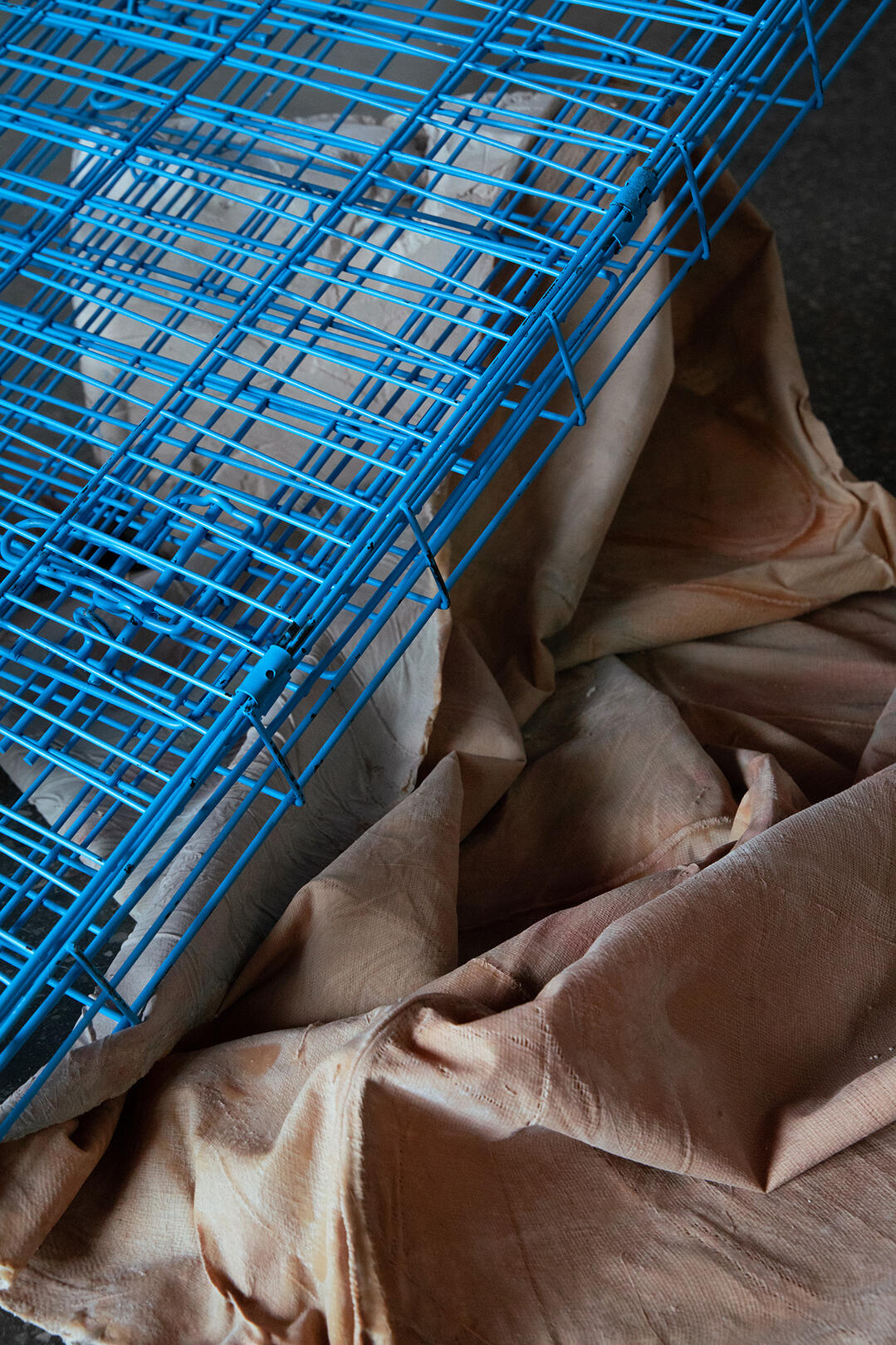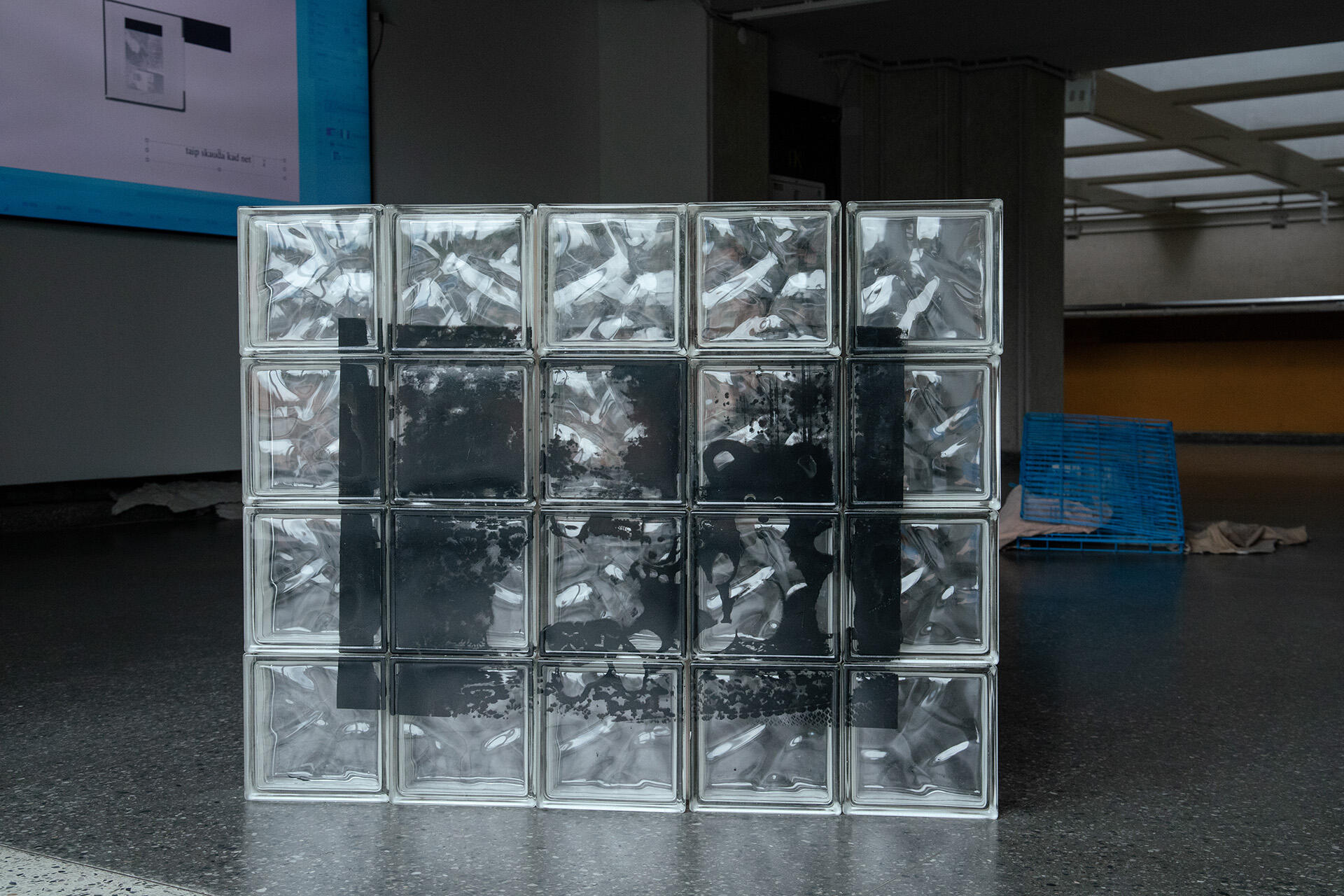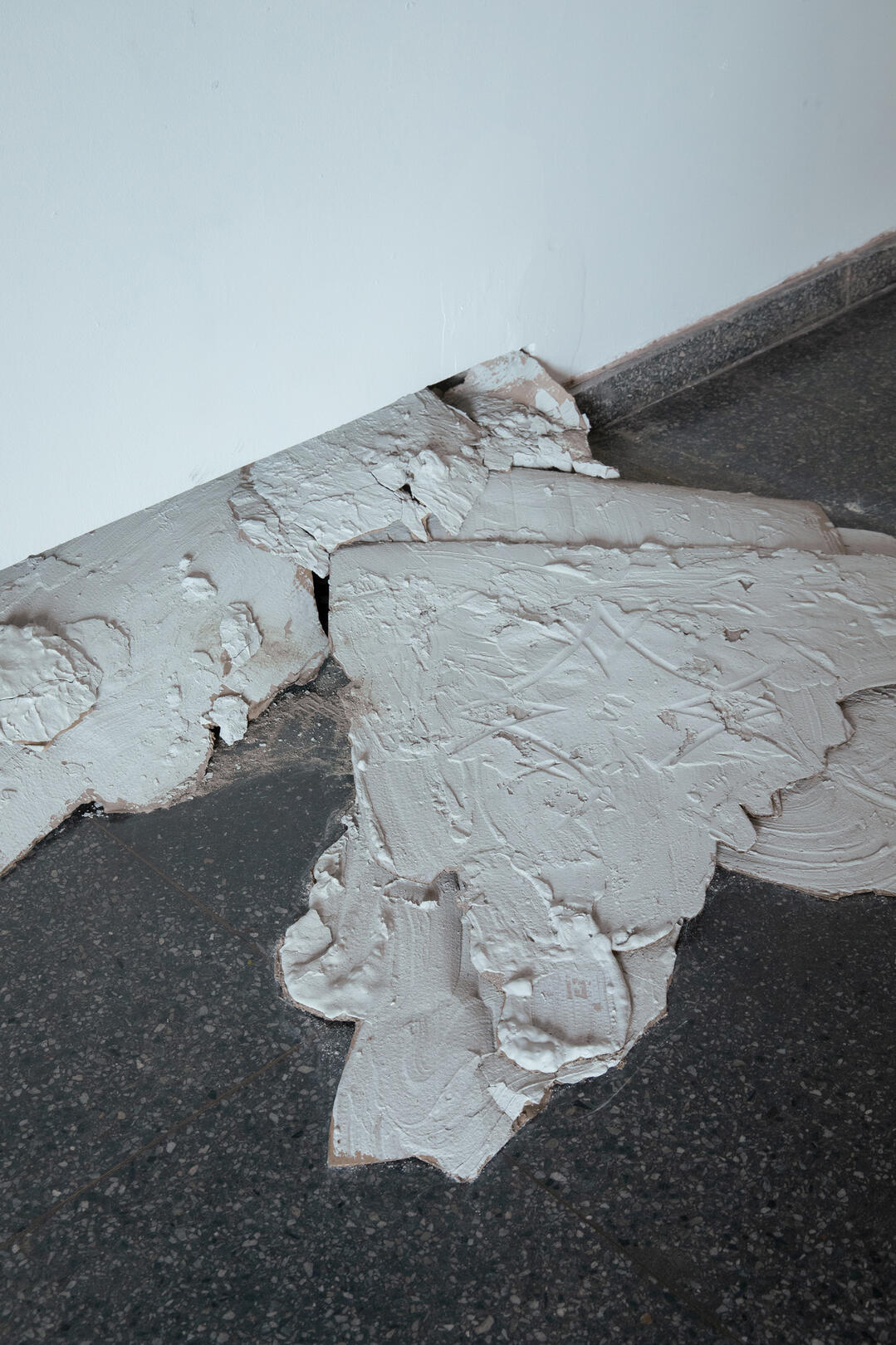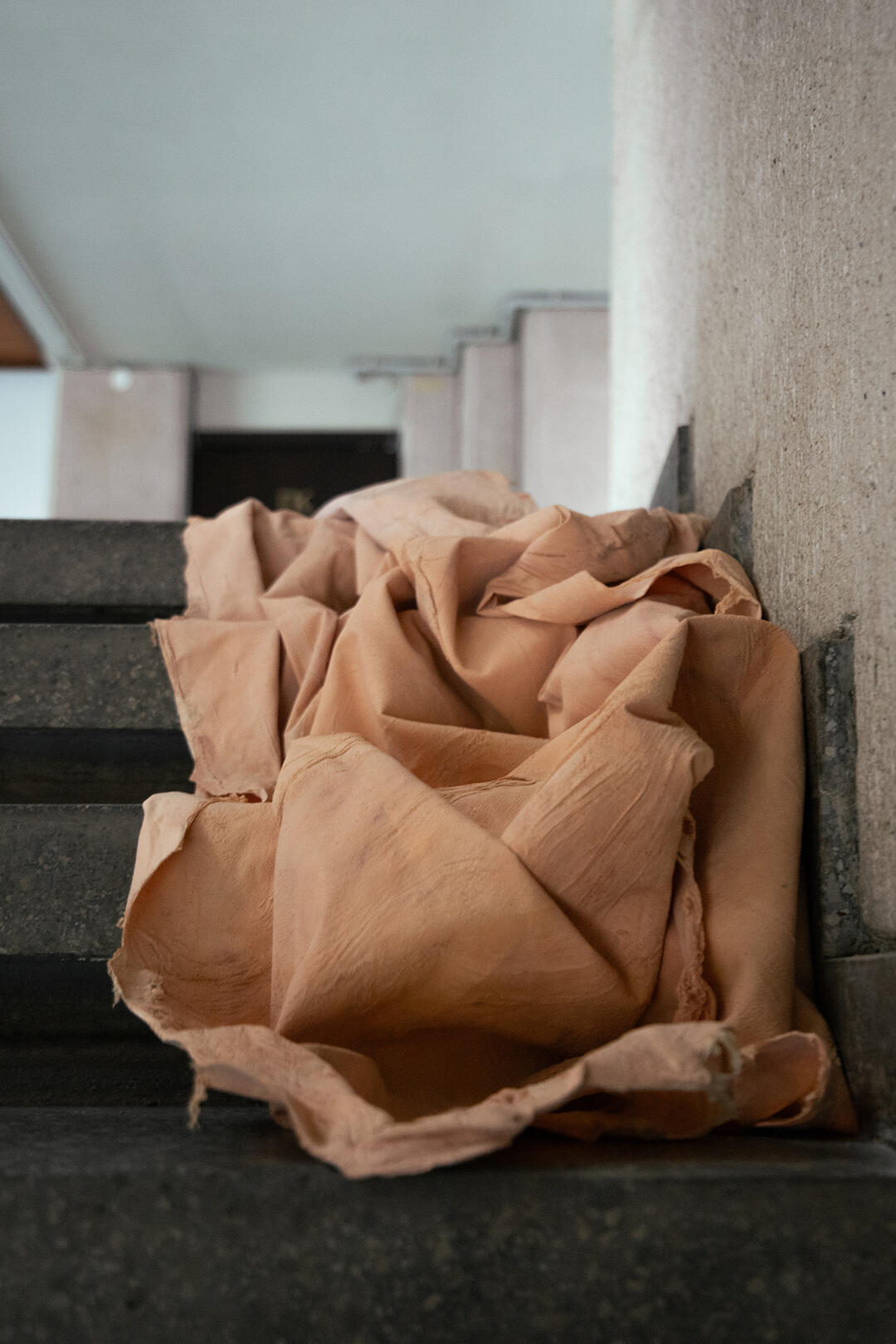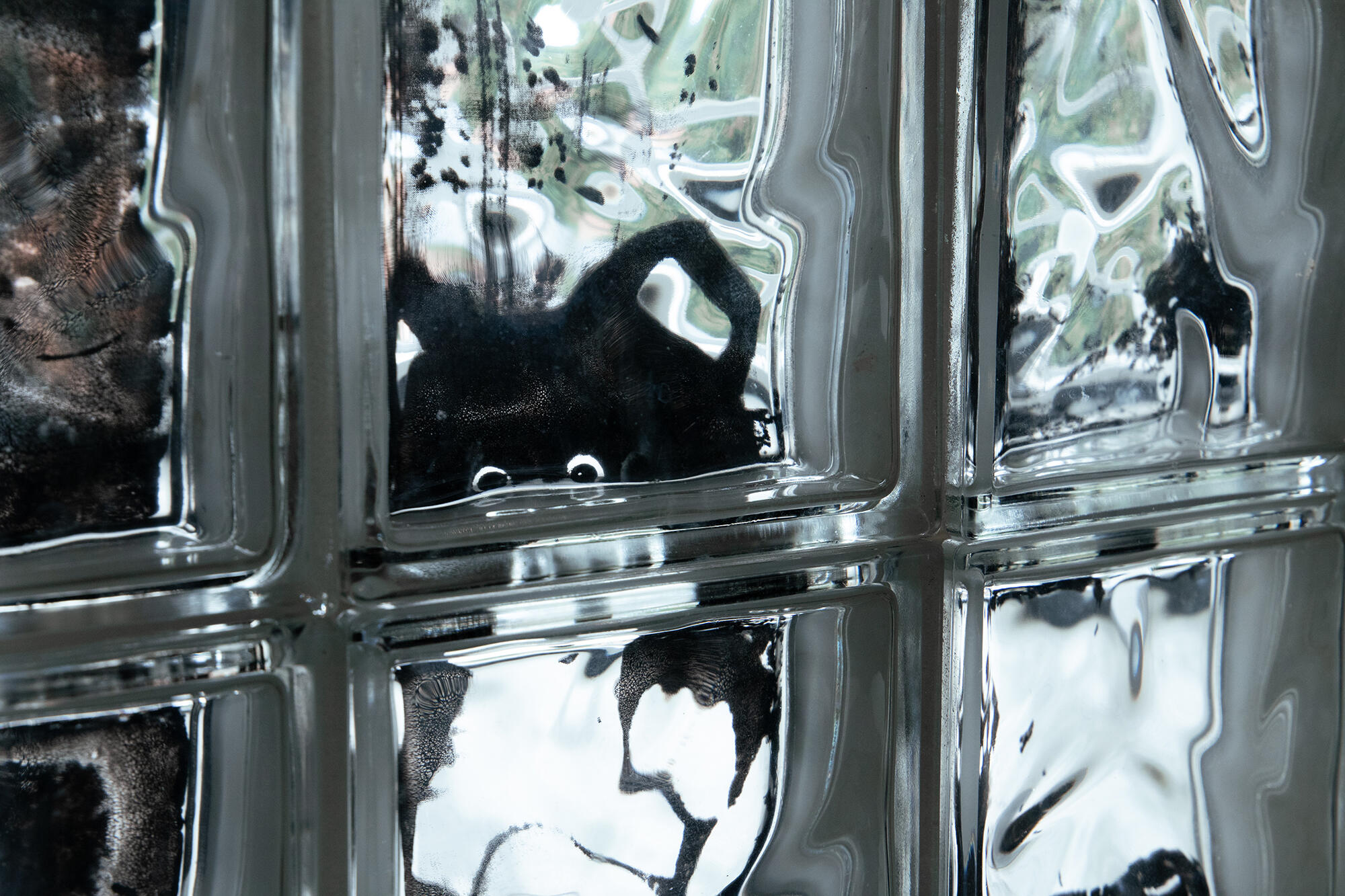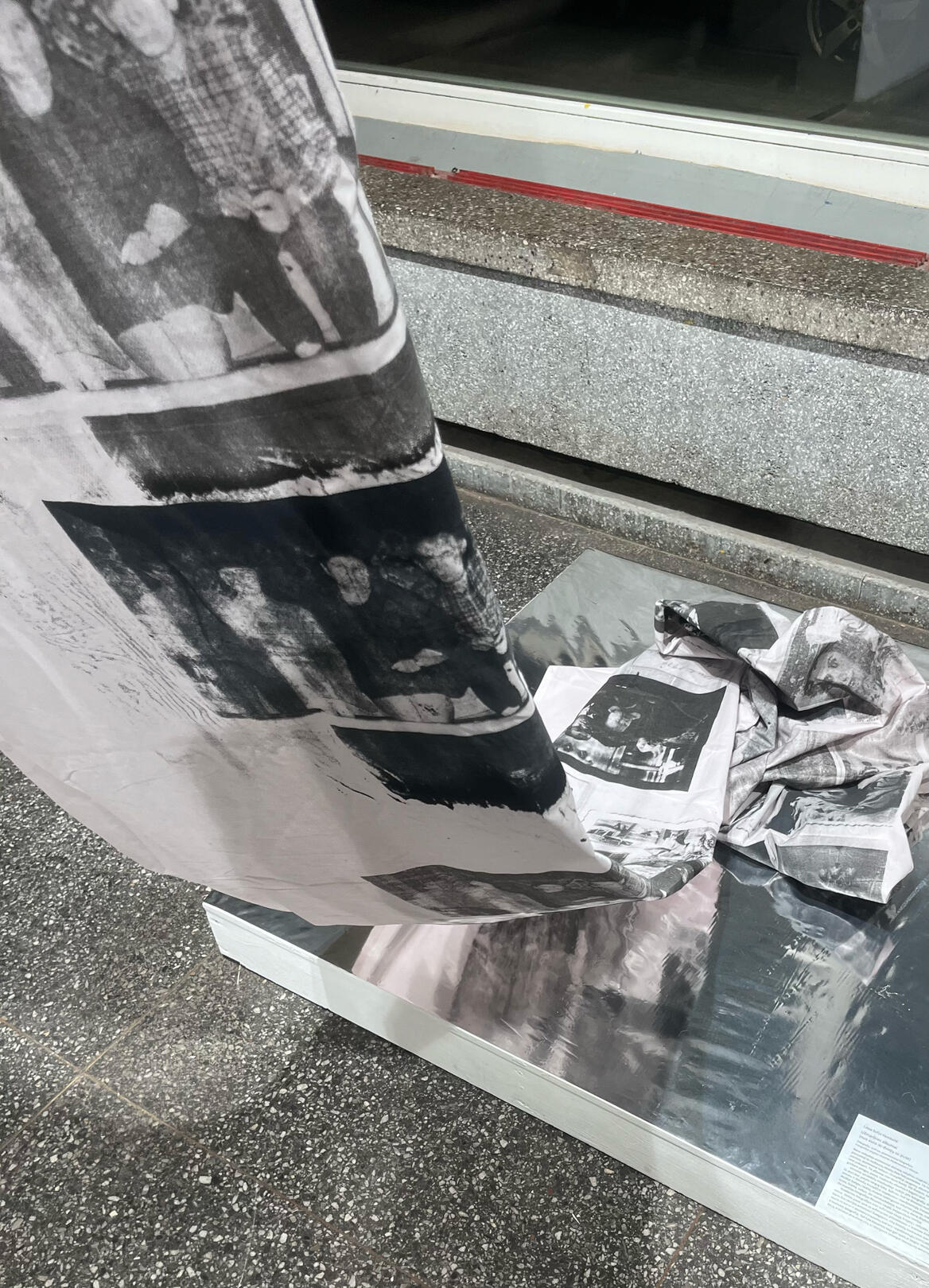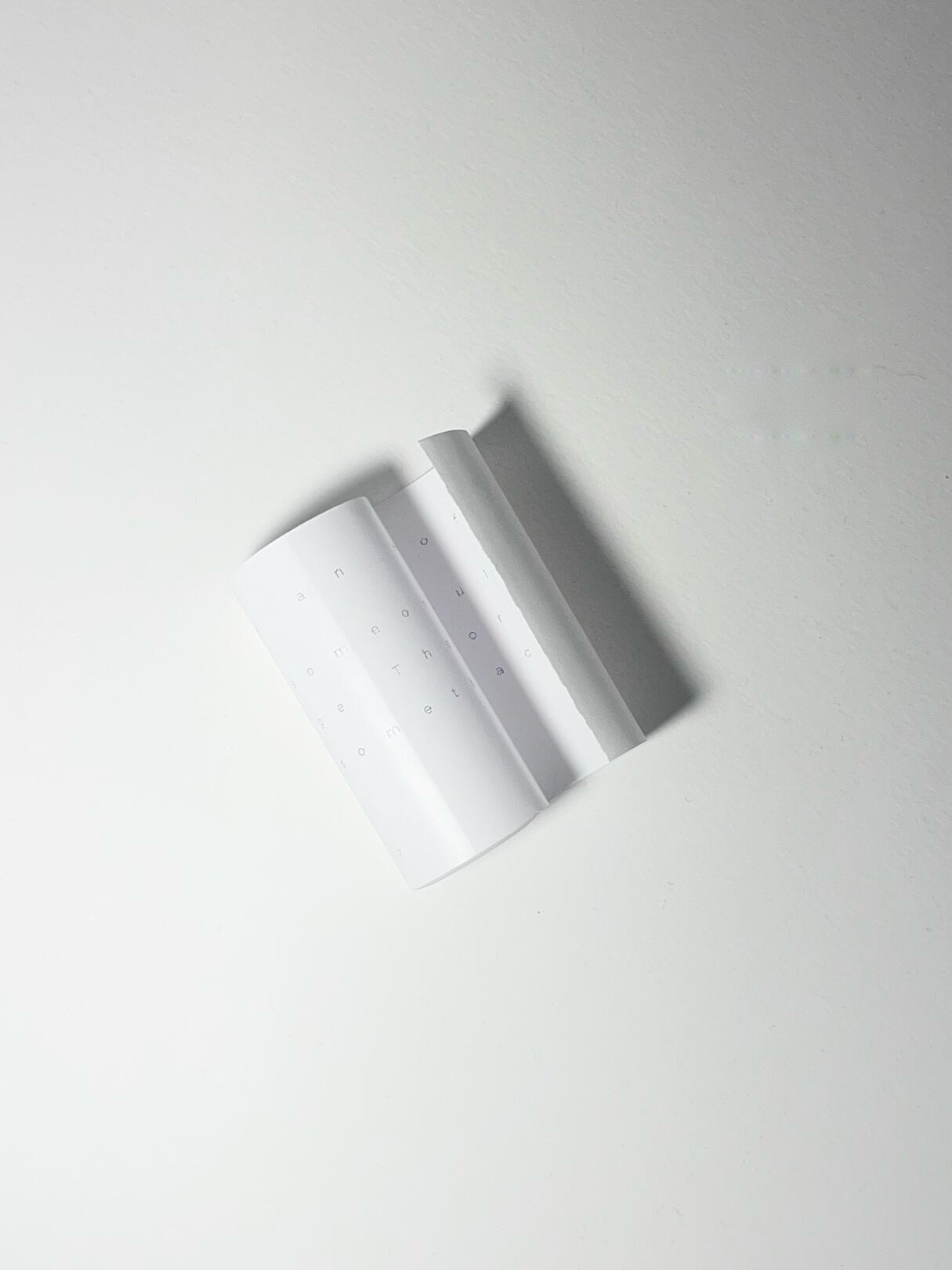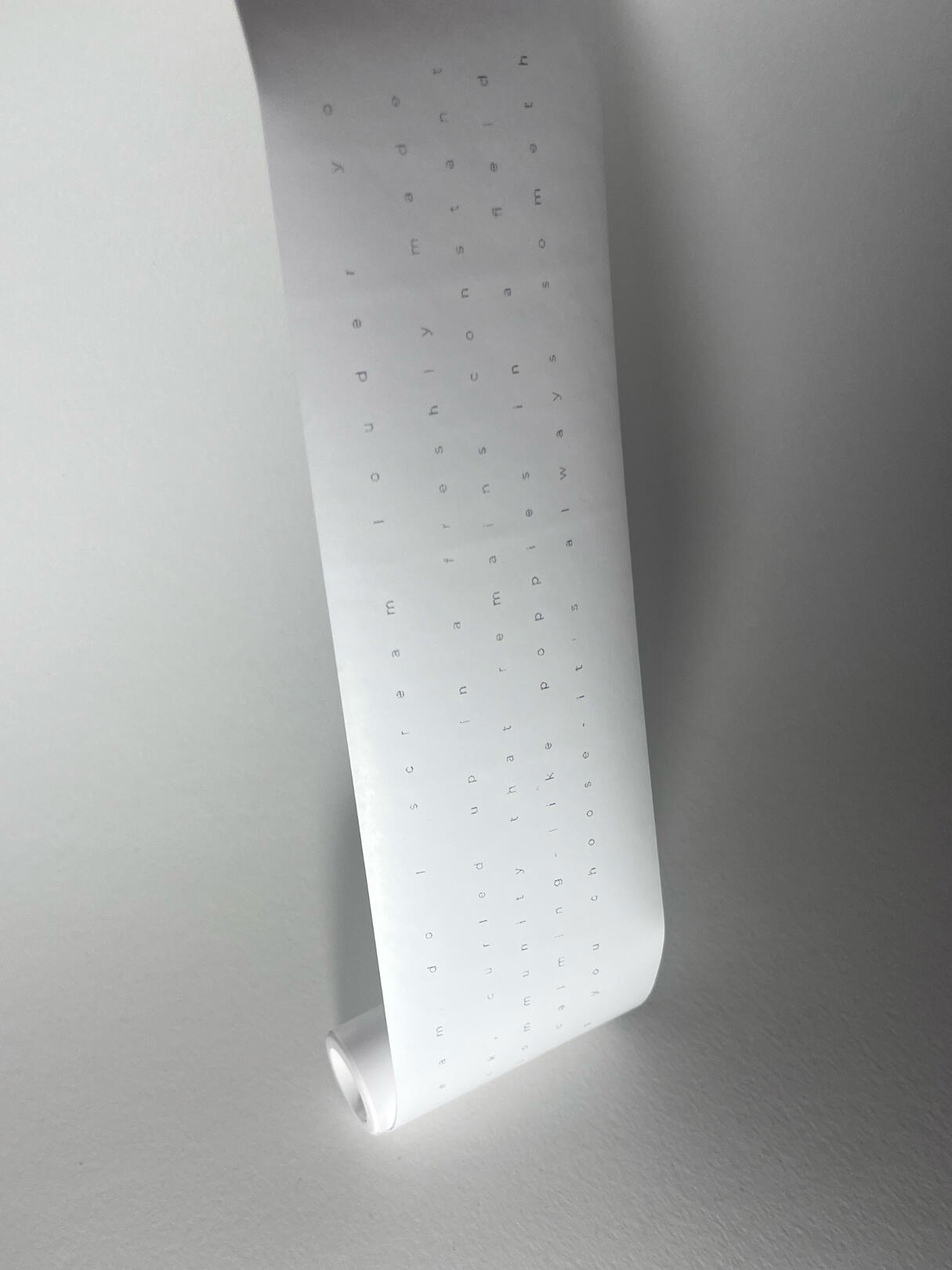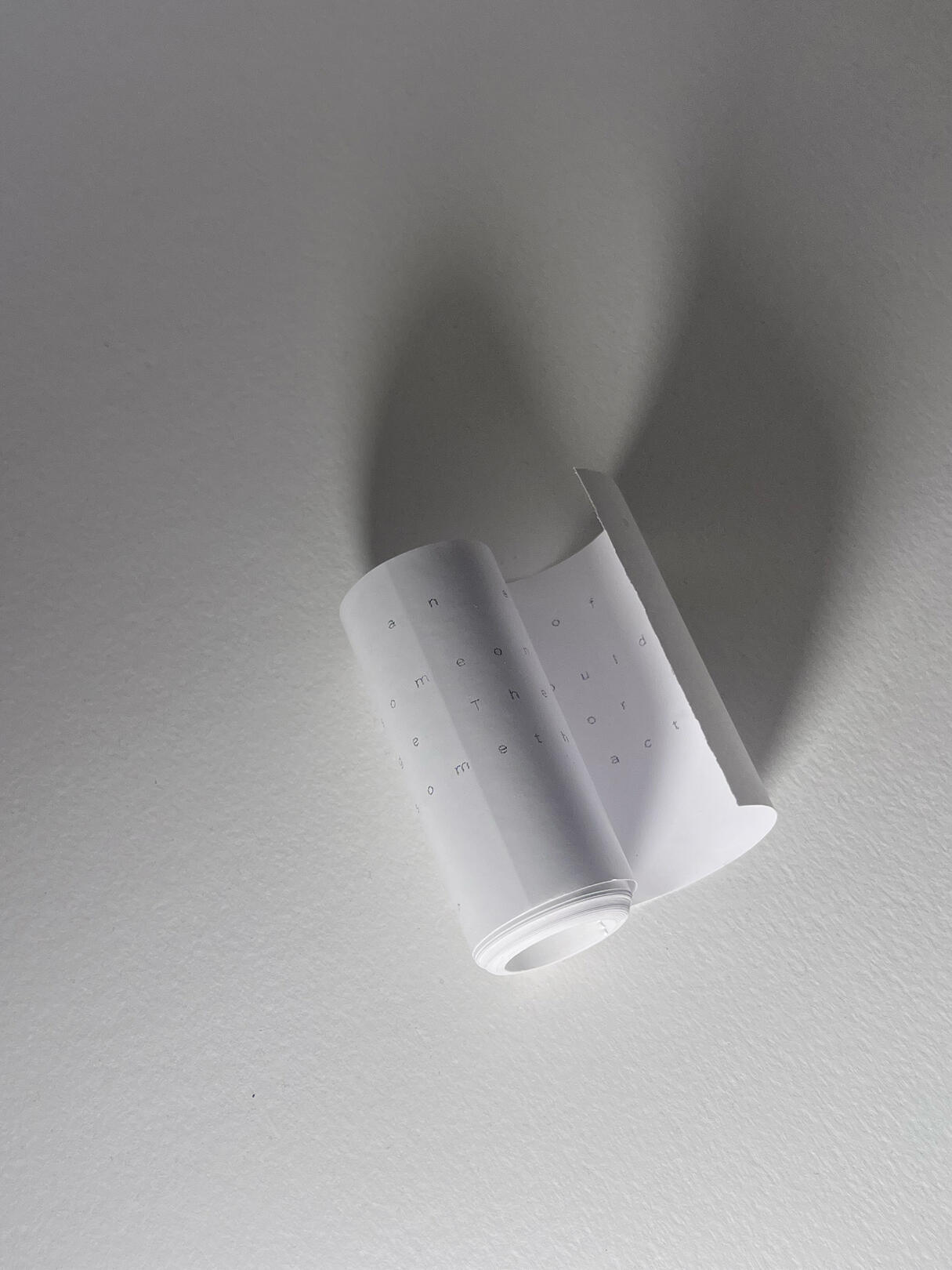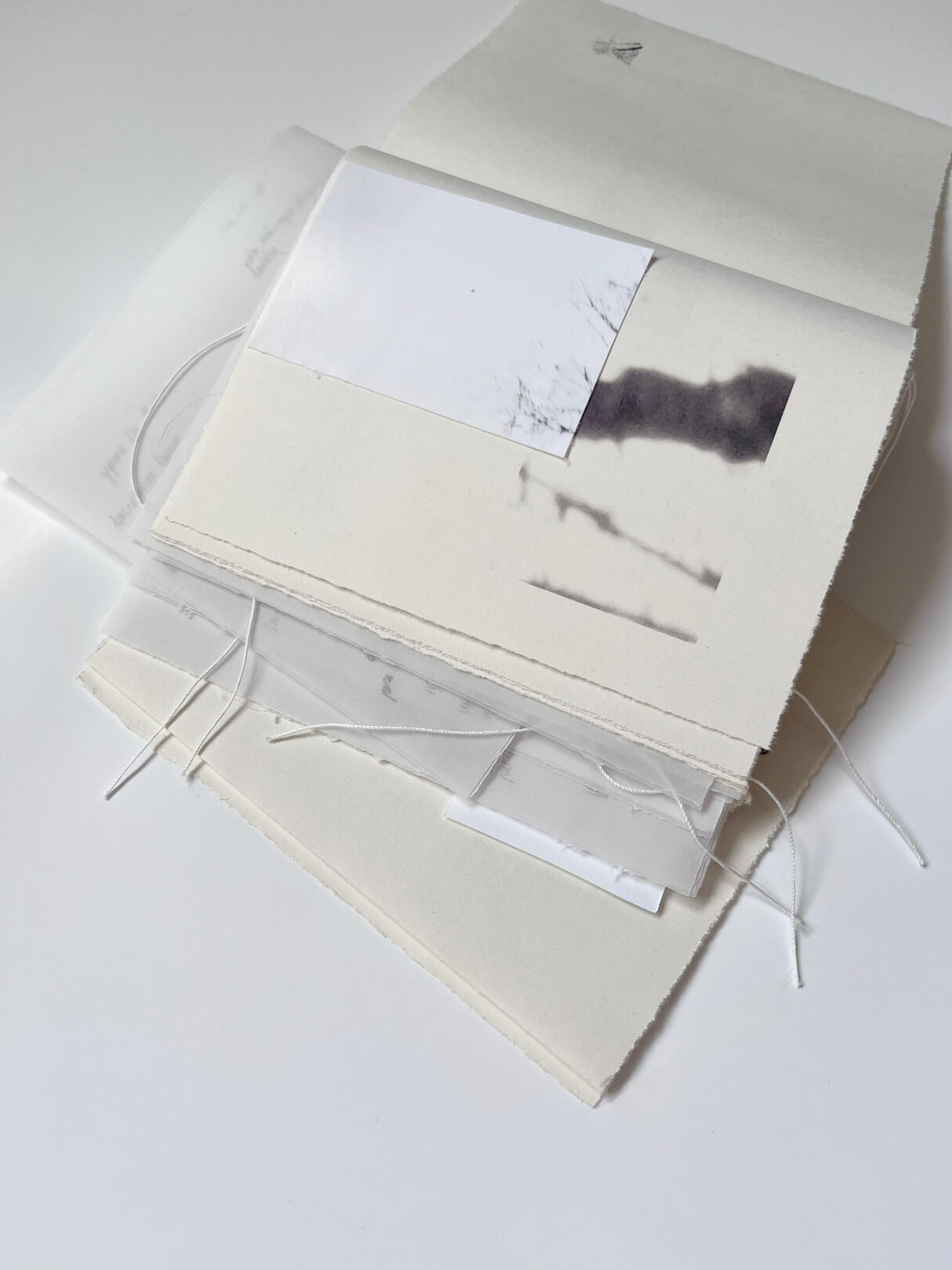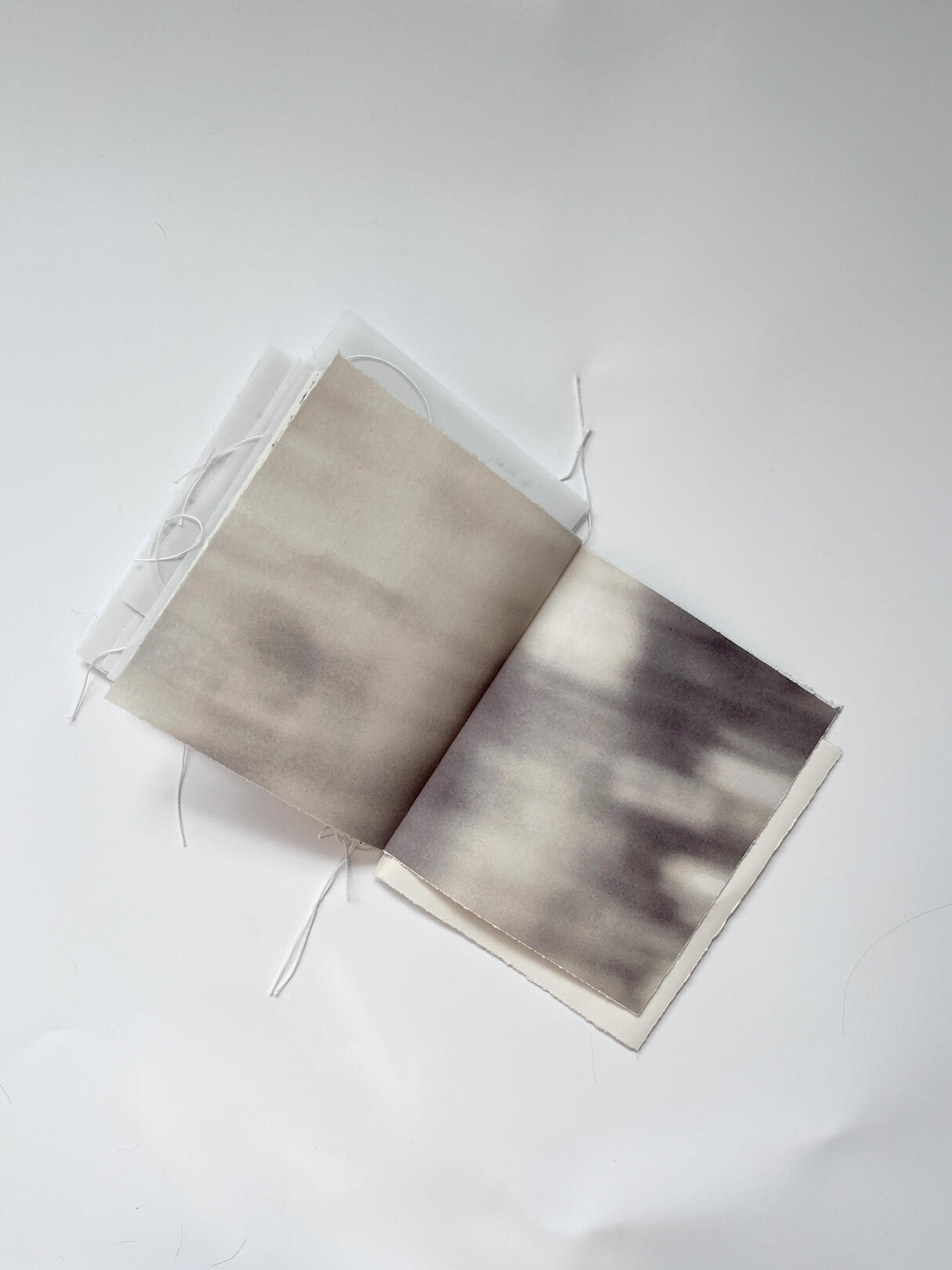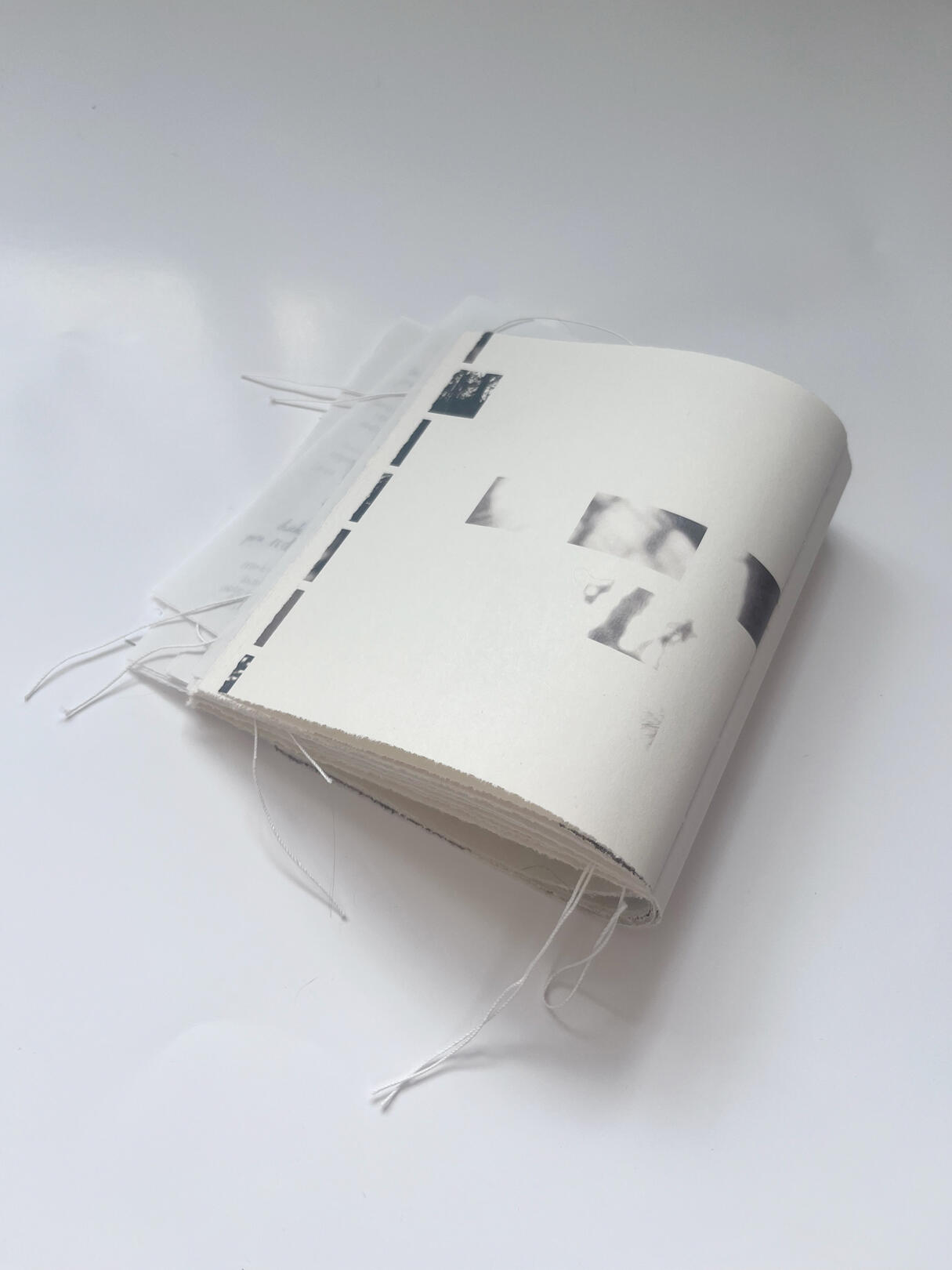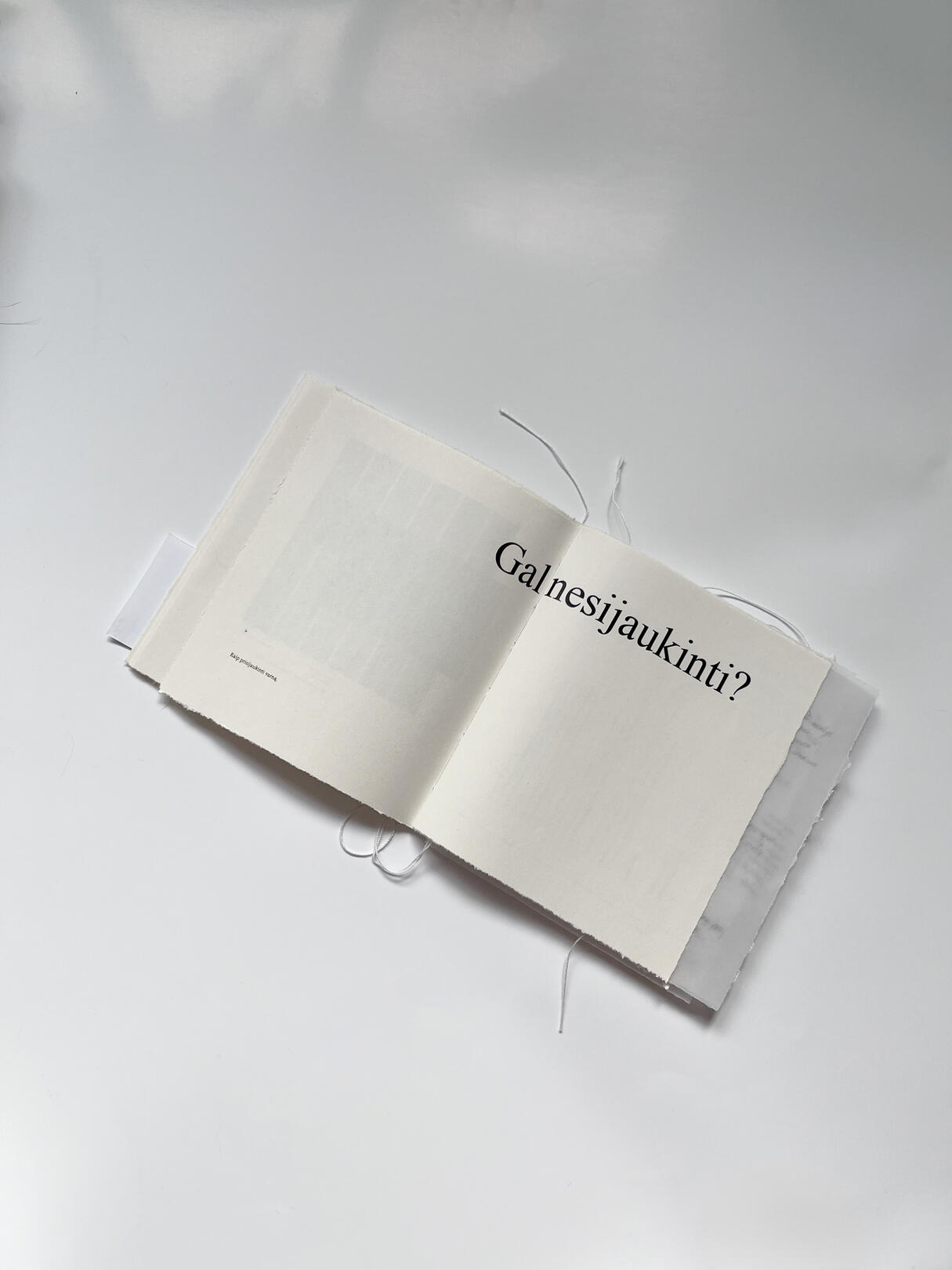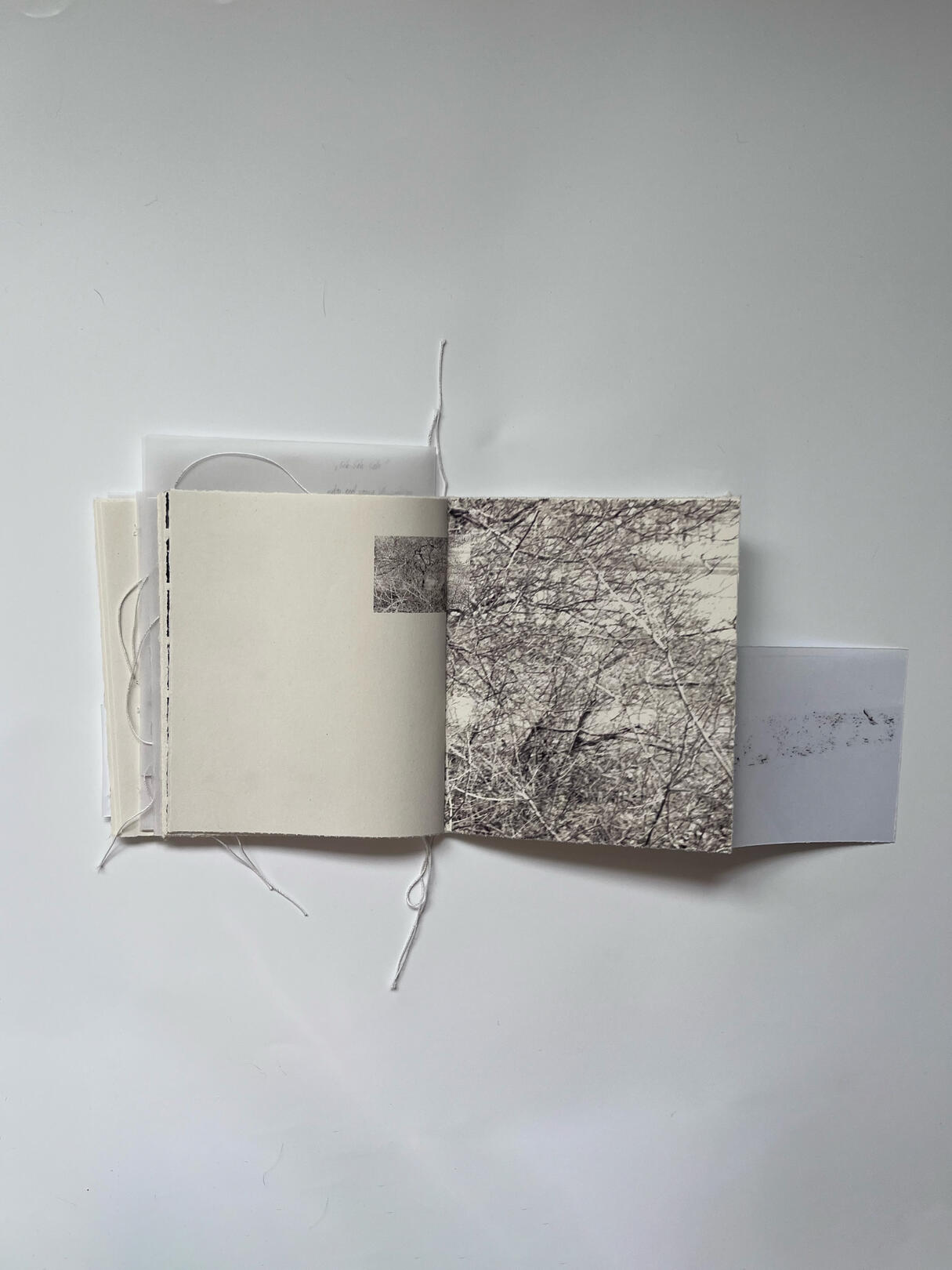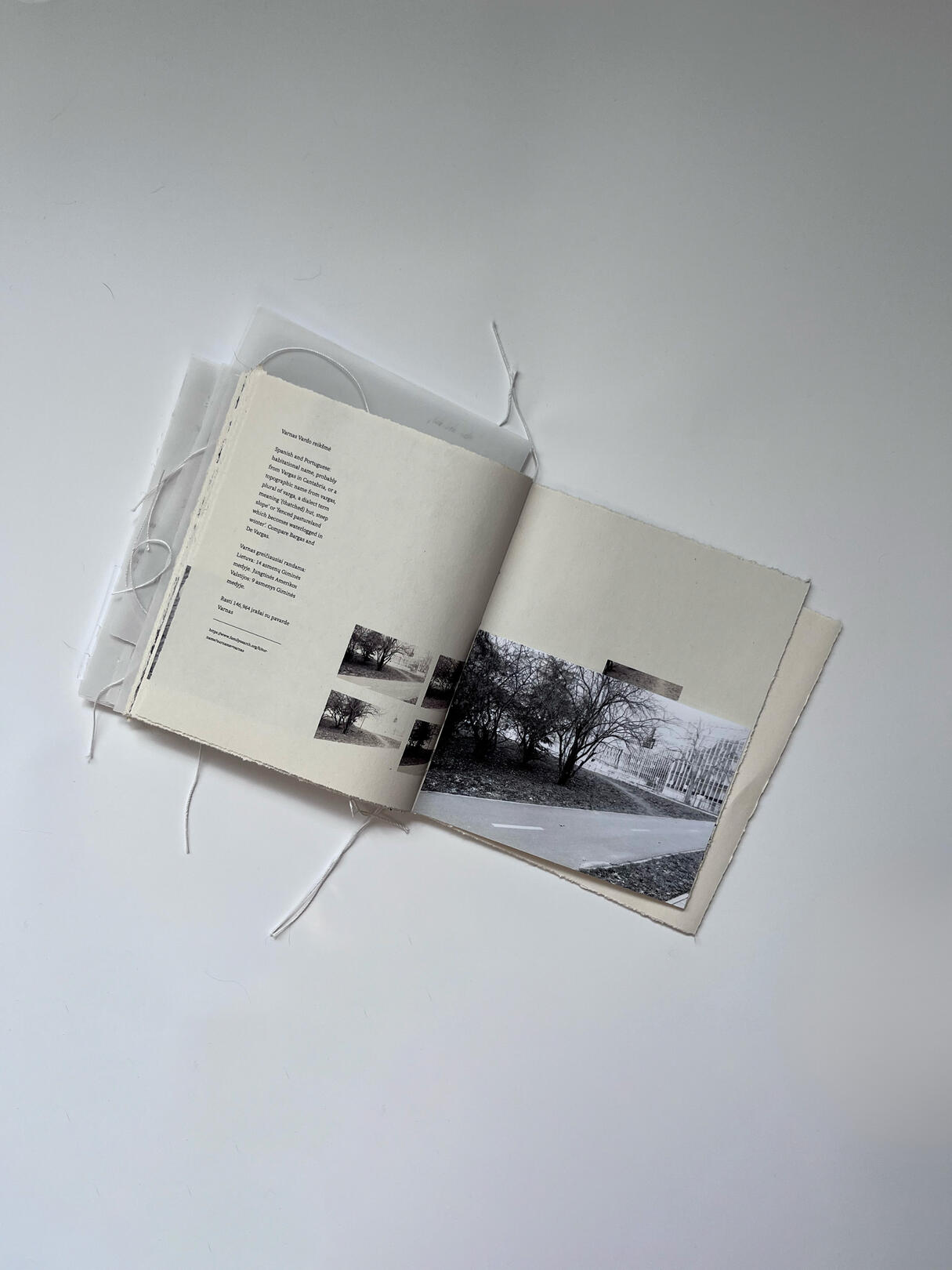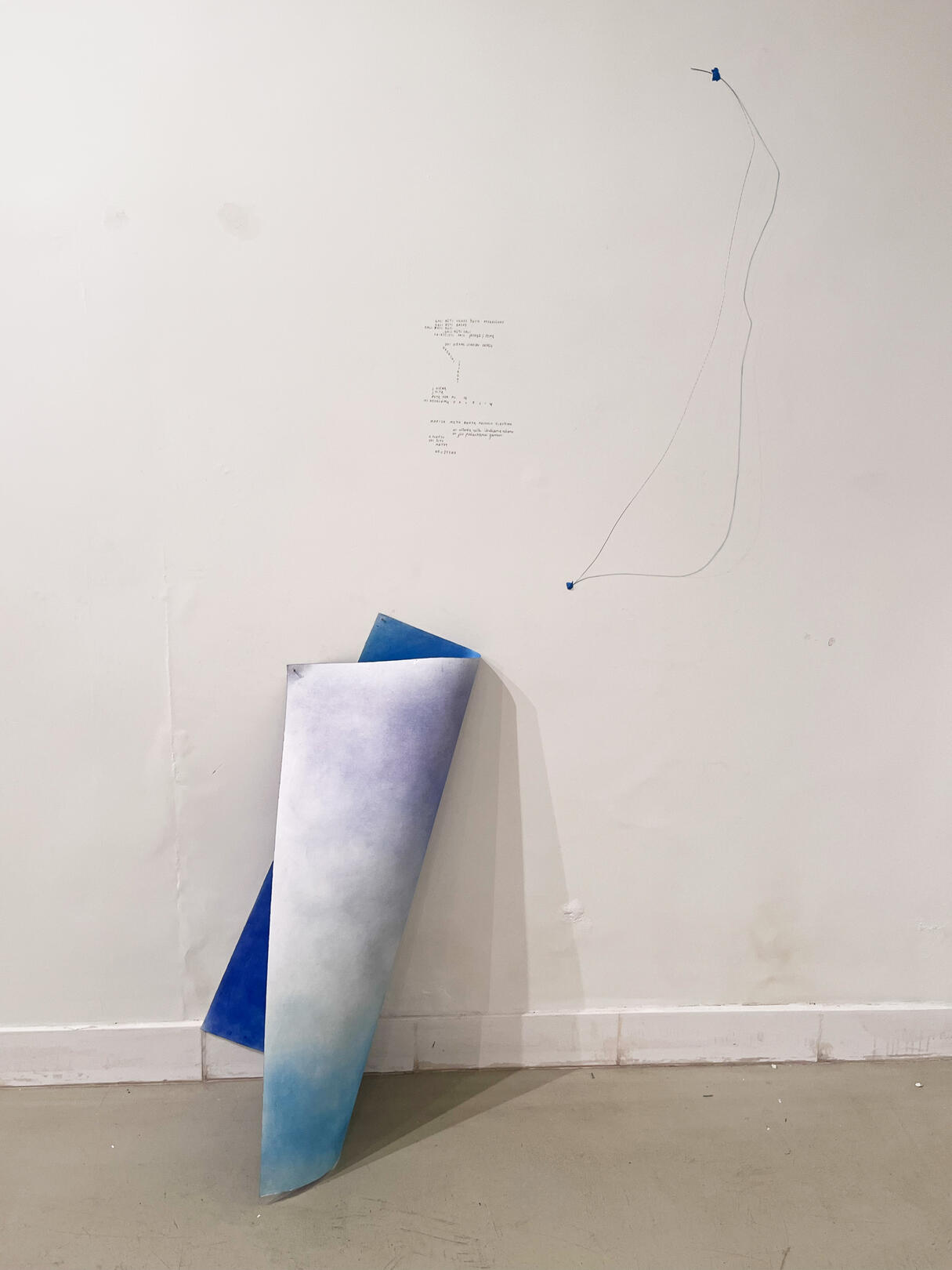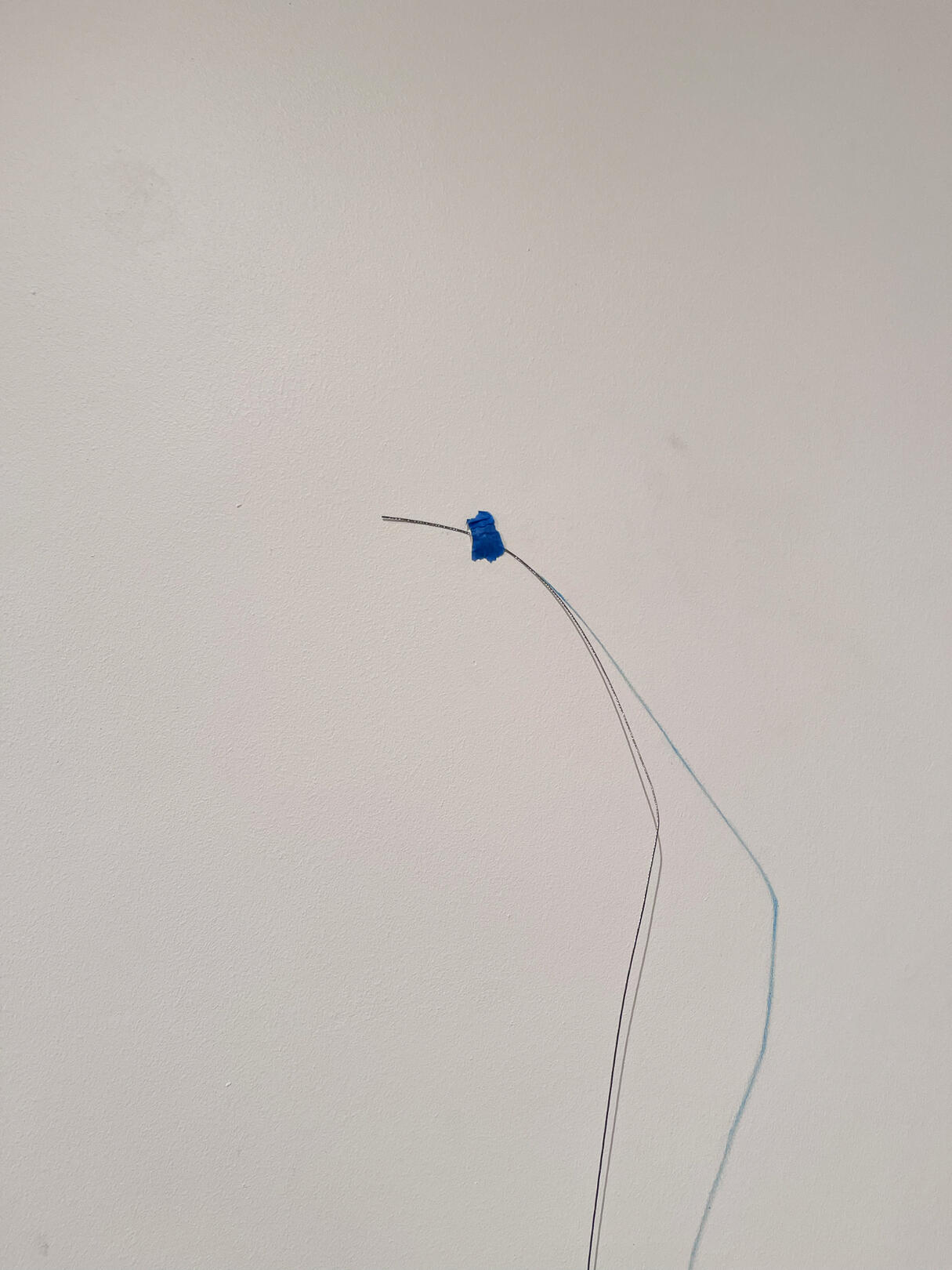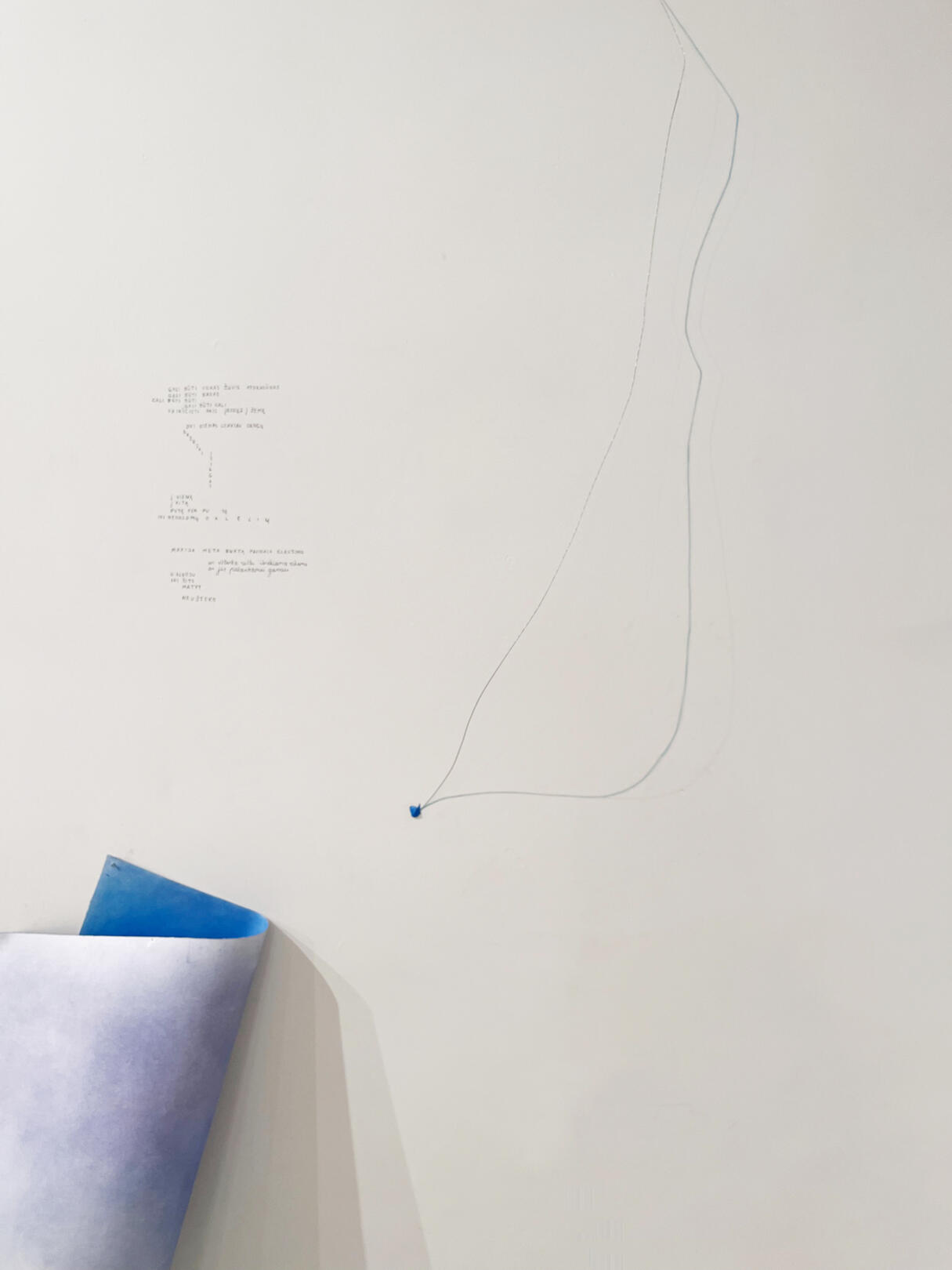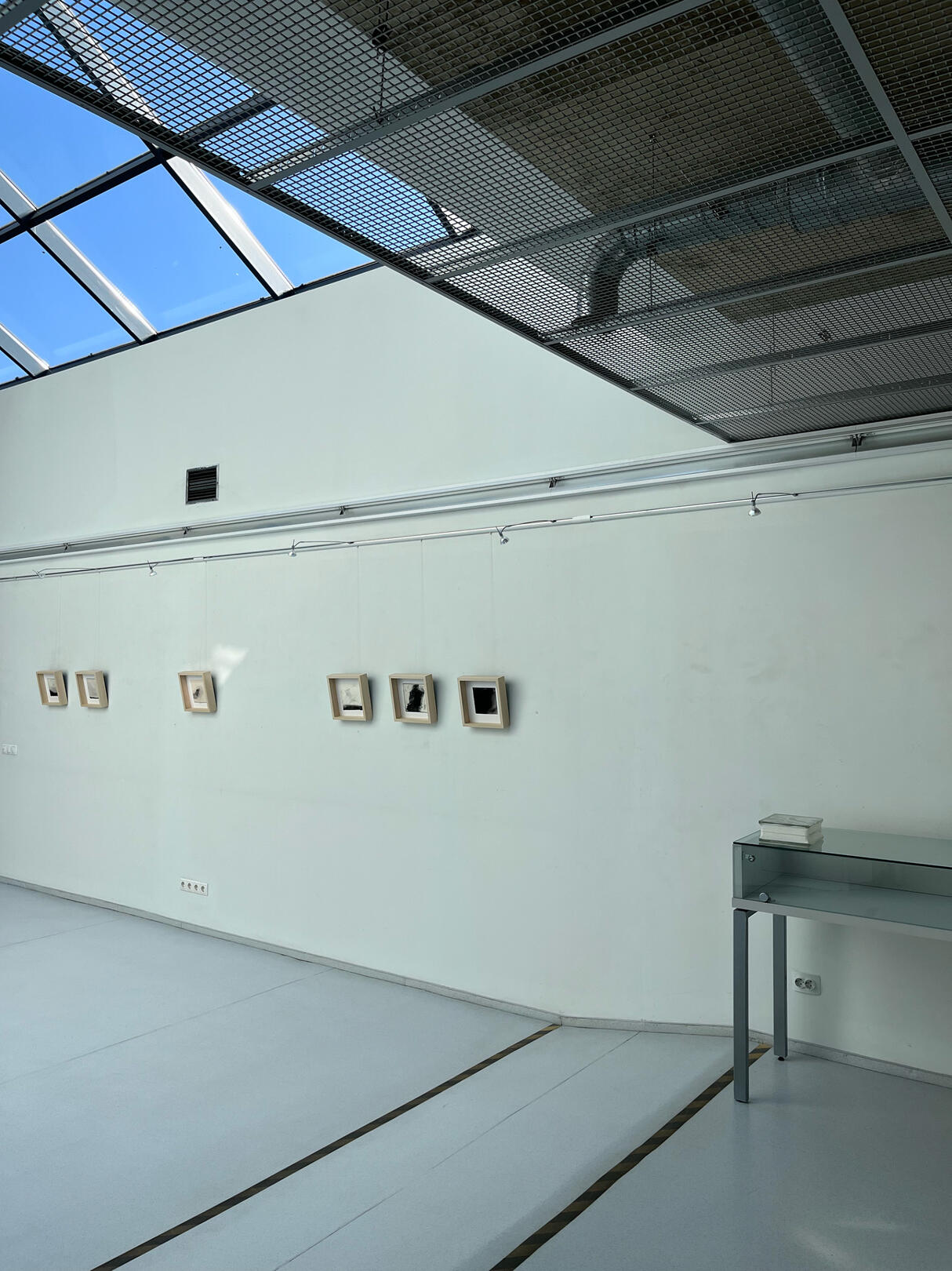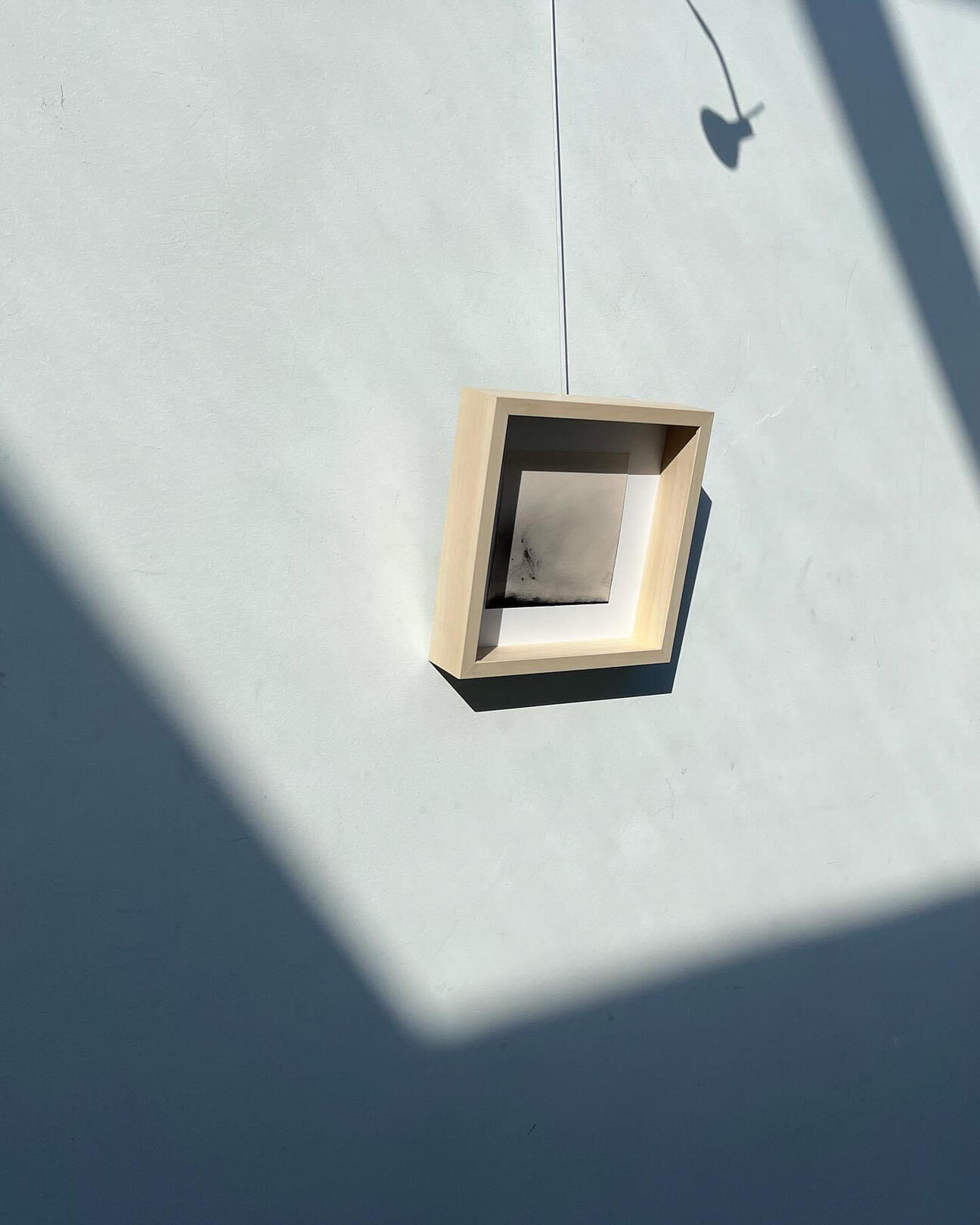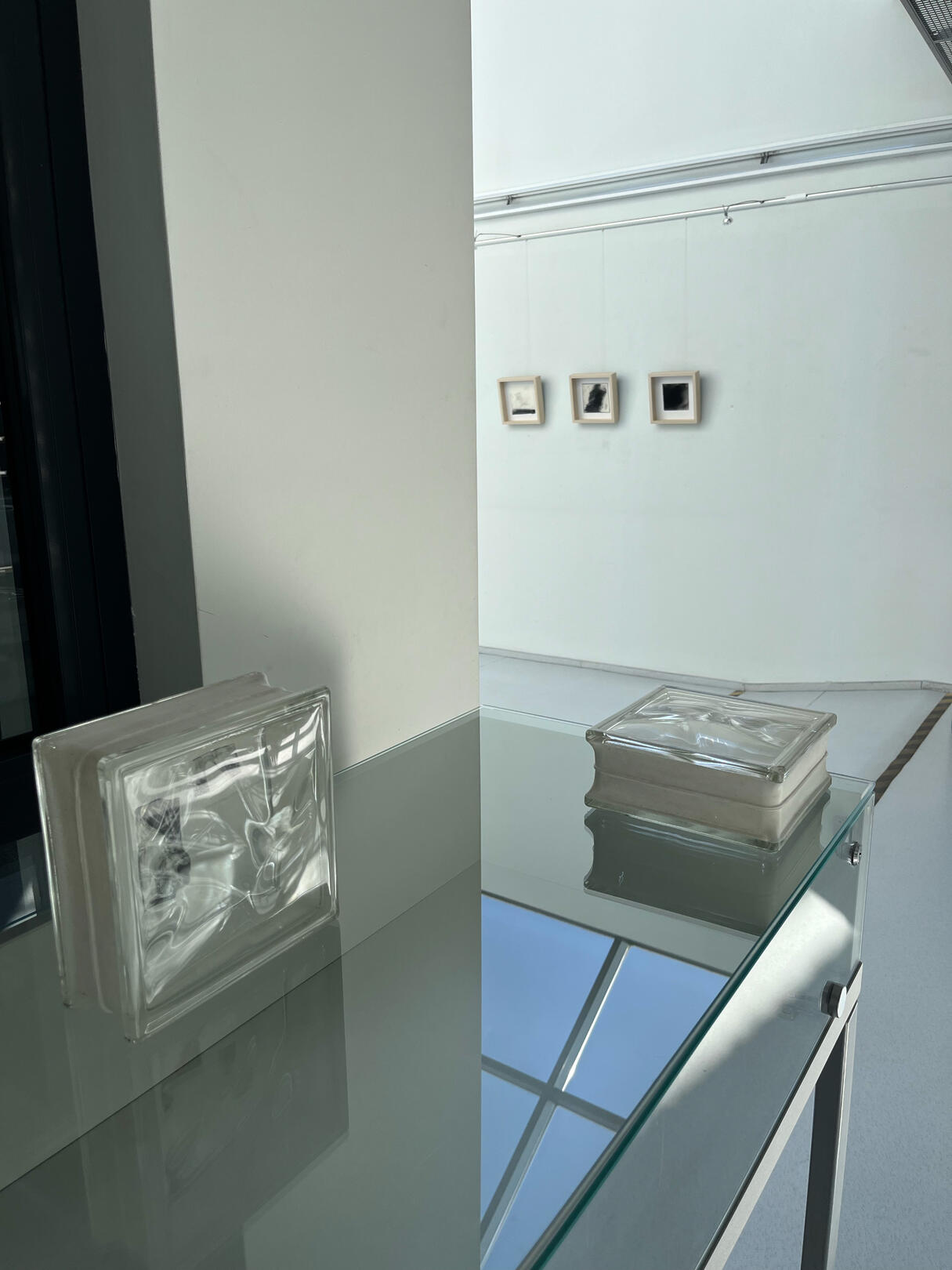Liepa Sofija Vareikaitė (Varis)
2025Liepa Sofija Vareikaitė (b. 1995) is a Lithuanian visual artist and designer working across video, installation, print, sound, and text. She graduated Cum Laude with a Master’s degree in Fine Arts (Graphics) from the Vilnius Academy of Arts in 2025. Her practice centers on emotional archaeology—excavating personal and cultural memory through fragile visual systems, unstable narratives, and interdisciplinary form.In her work, Vareikaitė merges analogue and digital techniques to explore themes of trauma, identity fragmentation, and the tension between silence and exposure. She often constructs installations where voice, image, material, and space interact—creating environments that embody unresolved emotional states rather than resolve them.She has held three solo exhibitions (5 Malūnai Gallery, Menų spaustuvė, and A. and M. Miškiniai Gallery) and participated in over 15 group exhibitions in the past three years across Lithuania and internationally, including at Vilnius Graphic Art Center, ''GAFU Gallery (Czech Republic), KKKC Exhibition Halls, and Gallery Medium (Slovakia).Her video and installation work Re-Type Type Type received the Grand Prize at BookVision 2025 in Ostrava. She was also awarded 1st place in the MKČ reinterpretation prize by the Vilnius Academy of Arts and Vilnius Auction. In 2024–2025, she received a creative research grant from the Lithuanian Research Council for a project exploring graphic notation as both visual and musical language._________________For project inquiries or collaborations, reach out at: [email protected]
'Re-Type Type Type'Video-sound artThis artwork—an interplay of video and sound—exists in a state of perpetual rewriting. Two parts, made years apart, reflect our endless effort to rethink and rephrase, chasing meaning that always shifts. The first, a 2022 sound piece, stems from a 7-second ambient recording at a Vilnius bus stop. Re-recorded seven times in a closed room, the sound overwrites itself until no change is heard—seeking clarity, ending in ambiguity. The second, a 2024 video, is a looping text: “It hurts so much that it’s shameful.”Typed, erased, rewritten—thoughts cycle and decay. Flickering negatives of childhood photos echo this instability: posed, artificial, claiming truth, yet just as fragile. Together, they form a whole—a mirror of the same restless process: trying to define, only to distort;Exhibited in Vilnius, Lithuania (5malūnai gallery); Gallery of Faculty of Fine and Music (GAFU), Ostrava; Gallery Medium (Bratislava);Awards: Grand prize in the Other Media category (BookVision 2025, Ostrava)._
'It Hurts So Much It’s Shameful'
/Art installation, video work, sound work, film negatives, artist's book/2025 06 02–08 25Gallery„5 malūnai“The exhibition is curated by Marija Marcelionytė-PaliukėCreative project: It Hurts So Much, It’s Shameful Supervisor Marija Marcelionytė-Paliukė Research paper: A creative text titled “It Hurts So Much, It’s Shameful” — and, by the way, also about identity fragmentation Supervisor Assoc. doc. dr. Jurgita LudavičienėWhat hurts? What is hurting? To whom does it hurt? What does it hurt? With what does it hurt? Where does it hurt? It hurts!
I am as long as I perceive myself memory fragmented I am when I perceive myself I am when it hurts when it hurts I am not I’d like to scream but no one hears I could scream louder but I’d be ashamed in front of the neighbors fragmentation means explosion and after the explosion silence screams I am when I make myself up I am when I see I am when I change my mind one letter destroys silence and the letter I a nihilate I think I rethink I think again I must live correctly so there would be no shame but only a thought touches the throat it changes its flow its flow it changes its flow it changes its flow it stops a a a a.First, they told me I was a human being. Later, they specified I was a girl whose name started with the letter J. She said that J was an ungrateful little slob because she hadn’t cleaned her room again. They said I was bound to become someone. He said I was the only thing keeping him alive on this earth. She said you must always greet the neighbors. I was told not to cry, not to scream, not to complain, and to expect nothing from the world. They said my shirt had to be white and my hair brushed. She taught me to walk with smaller steps, because girls don’t walk with big ones. They said I had to study hard and always tell the truth. He said this drink was definitely the last one—but it never was. She smeared orange, stinking powder on my face and said now I was almost pretty. They said that when some aunt offers you money, you should refuse twice and only accept it if she offers a third time. They said, said, said—and then they forgot it all.Layer after layer, I shed my skin and throw it to the ground. Metal frames of morality hold up my spine, yet every time it’s touched, it turns out to be far too fragile. Every thought, before it reaches another, is gutted. And even after passing through a thousand sieves, even worn down to a barely visible thread, it gets sent back — for yet another round of processing.A few days before the exhibition opening, the cleaner collects my skins and throws them in the trash. She says they were lying around where they shouldn’t have been. Later, I find them and return them to the same non-places. Everything feels like a foreign body — nothing finds its place, everything ends as if it never began. Everything ends befo__________________
Liepa Sofija Vareikaitė (b. 1995) concludes her Master’s studies in Graphic Arts at the Vilnius Academy of Arts, Faculty of Vilnius, Department of Graphics, with the work It Hurts So Much It’s Shameful. In this piece, the artist explores the phenomenon of fragmented identity and the influence of memory (or self-memory) in shaping that fragmentation. The process of rewriting and perpetually rethinking the self takes on a visual form in the installation.
The viewer is met by what appear to be carelessly discarded pieces of skin (latex), a video and sound work capturing the act of self-rewriting and the deconstruction of noise, as well as overexposed, accidental, never-developed images from a childhood home that question the reality of memory. Nearby, on small glass cubes, rests a silkscreen print-memory, and behind it — an artist’s book conceived as a never-ending manuscript. A crumbling lump of plaster supports a pale-blue metal framework, filled with research and writing collected throughout the years of study — never shaped into a final theoretical form.Photos by Anna Chostegian_
Albums of Oblivion' (From One Euro to Two and a Half)Book-objectIn my childhood, digital photography didn’t exist. Every memory was frozen on film, later preserved in sacred albums. If the house caught fire, we knew to grab money, passports, and photo albums. So when I saw a pile of discarded photographs labeled "postcards" in a Utrecht thrift store, I was shocked. “Where did these come from?” I asked. “Found near a trash bin,” the seller replied. I left with a bundle of unknown people’s (non)memories—babies, funerals, celebrations unaware I’d one day erase them, transforming black dots into fabric. Now I view my own childhood photos differently. I wonder: Will this ever be worth 2.5 euros? Do I only exist as long as I remember myself? Among the strangers, I once placed a photo of my grandmother. This project is an artist’s book—images silkscreened onto fabric, merging permanence with decay. A fragmented archive of lost memories, it questions photography’s endurance in a digital age, mimicking the fragility of recollection;Exhibited in Vilnius, Lithuania (5malūnai gallery); Gallery of Faculty of Fine and Music (GAFU), Ostrava; Gallery Medium (Bratislava)._
'Fuga Maris' (Video-sound Art)This video is part of the installation Fuga Maris, and can be experienced independently as a visual–sound artwork. The work stems from a practice-based research project on graphic notation, using M. K. Čiurlionis’ unfinished fugue FUGA IN B, OP. 34 as a point of departure. Rather than treating notation as a tool for performance, the project explores it as a visual and conceptual space. Here, the letter “a” is taken as a minimal vocal event—a breath, a cry, a vibration of the voice. Repeated and visualized as rhythm, it becomes a fragmented score: a drawing made of time, a pulse shaped by voice. The video navigates the porous boundary between voice and image, between sound and its residue. There is no text, no melody—only a trace of something once spoken or sung;Exhibited in: Reinterpreting M.K. Čiurlionis – finalist exhibition of the Vilnius Auction and Vilnius Academy of Arts Prize, Vilnius College of Technologies and Design, Faculty of Economics, Naugarduko St. 5, Vilnius (Lithuania): May 7 – May 24, 2025;Awards: 1st Prize, Reinterpreting M.K. Čiurlionis – joint award by the Vilnius Auction and Vilnius Academy of Arts._
'Overstimulation: A Poem I Forgot' (Artist’s book)
/Thermal paper, thermal printer/Sensory overload is the overstimulation of the senses when the brain struggles to process inputs, often triggering discomfort or panic. It can happen in daily life: crowded spaces, clashing sounds, too much at once. The term “overstimulated” first appeared in 1798, long before the digital age, yet it feels more relevant now—when we face relentless flows of data, fake news, and fragmented narratives. For me, this evokes a sense of fecklessness. We move through a digital world where things seem fleeting Instagram stories disappear, notes scatter—yet everything is archived. During the CAC program All Good: Things We Like, our group explored overstimulation. I responded with an artist’s book a poetic object using visual distortion, gaps, and glitches. Printed with a small, imperfect printer, it reflects digital chaos in a physical form: fragile, unreadable, yet permanent. A paradox of presence and ephemerality.Exhibited in: BookVision 2025 book art exhibition, GAFU Gallery, Ostrava (Czech Republic) 2025.05.22 – 2025.06.18; Gallery Medium (Bratislava);
'How to Tame a Crow?' 148x210mm
/Digital print, artistic binding, tracing paper, book paper/
Edition: 1 copy
2024In the spring of 2024, while attending Professor Marija Marcelionytė-Paliukė's Experience Laboratory lecture, I randomly drew a task created by Emilė Krutulytė: "to experience the taming of a crow." This task materialized in the form of a book. This book is not a guide to taming crows nor an ornithological manual. Its creation was prompted by a question that arose in my subconscious: Is humanity's influence on nature excessive? The book presents all the gathered material on crow taming, illustrated with drawings, monotypes, and photographs.Exhibited in: FIRST EDITION book art exhibition, Galaunės House-Museum, Kaunas (Lithuania) 2025.04.17 – 2025.09.28;
Young New Graphics. The Metaphysics of the Book, gallery Kairė–dešinė, Vilnius Graphic Art Centre, Vilnius (Lithuania) 2024.11.08 – 2024.11.30_
'I'll wait for your response — as always, in your own time and at your own pace.'
/Site-specific installation. Dry pastel, wire, shadow drawing, text/2024 10 25 – 11 07“Empathy” was the first word that came to mind when I began thinking about the piece for Marija’s exhibition. The only condition was that the work must arise from our interaction. Her words echoed in my mind as I picked up the blue pastel. A few hours later, I found myself unveiling the familiar ache of that feeling — blue and heavy. I reached for nails and a hammer, bent that blue into form, and drove it into the wall of my room.After hanging on my wall for a week, the work was taken to Telšiai, where it was twisted, bent, and reshaped for two full days. I couldn’t find a form that resonated with the space while still preserving the emotion I wanted to embody. “You spent two days trying to tame the sky,” a colleague said — and I realized that was the best possible description of my process.This entire piece is a tribute to emotion. To the kind that sometimes wraps gently around your shoulders, and other times pierces straight through your gut like a cold metal ring. It’s so easy to shut it away, to hide it, to pretend it isn’t there. But for an artist, that isn’t an option. So I lift my tired body from the chair and head out to bend a new sky.Exhibited in: Witching Again..., exhibition curated by Marija Marcelionytė-Paliukė, VAA Telšiai Gallery, Telšiai (Lithuania) 2024.11.07 – 2024.12.07_
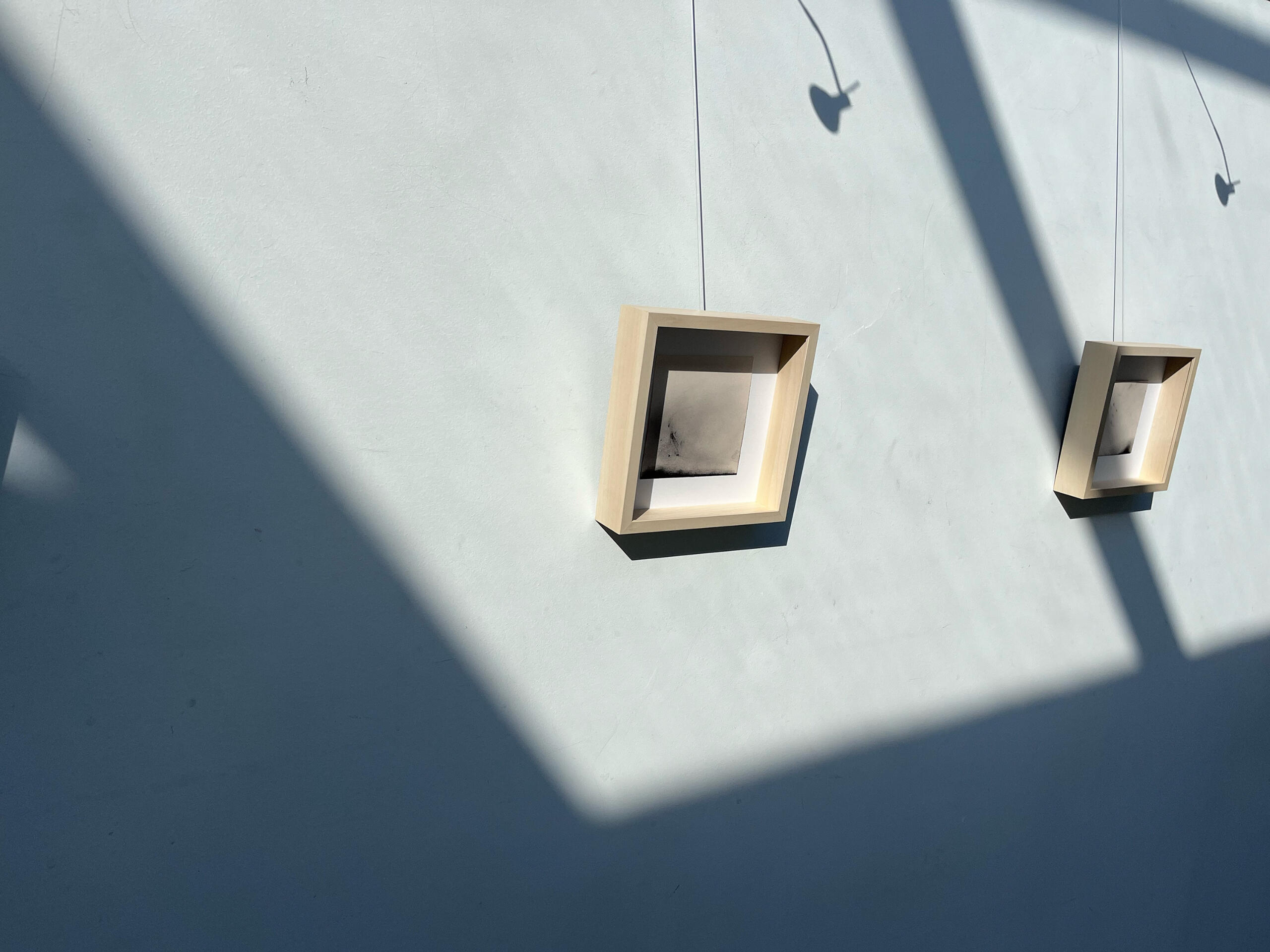
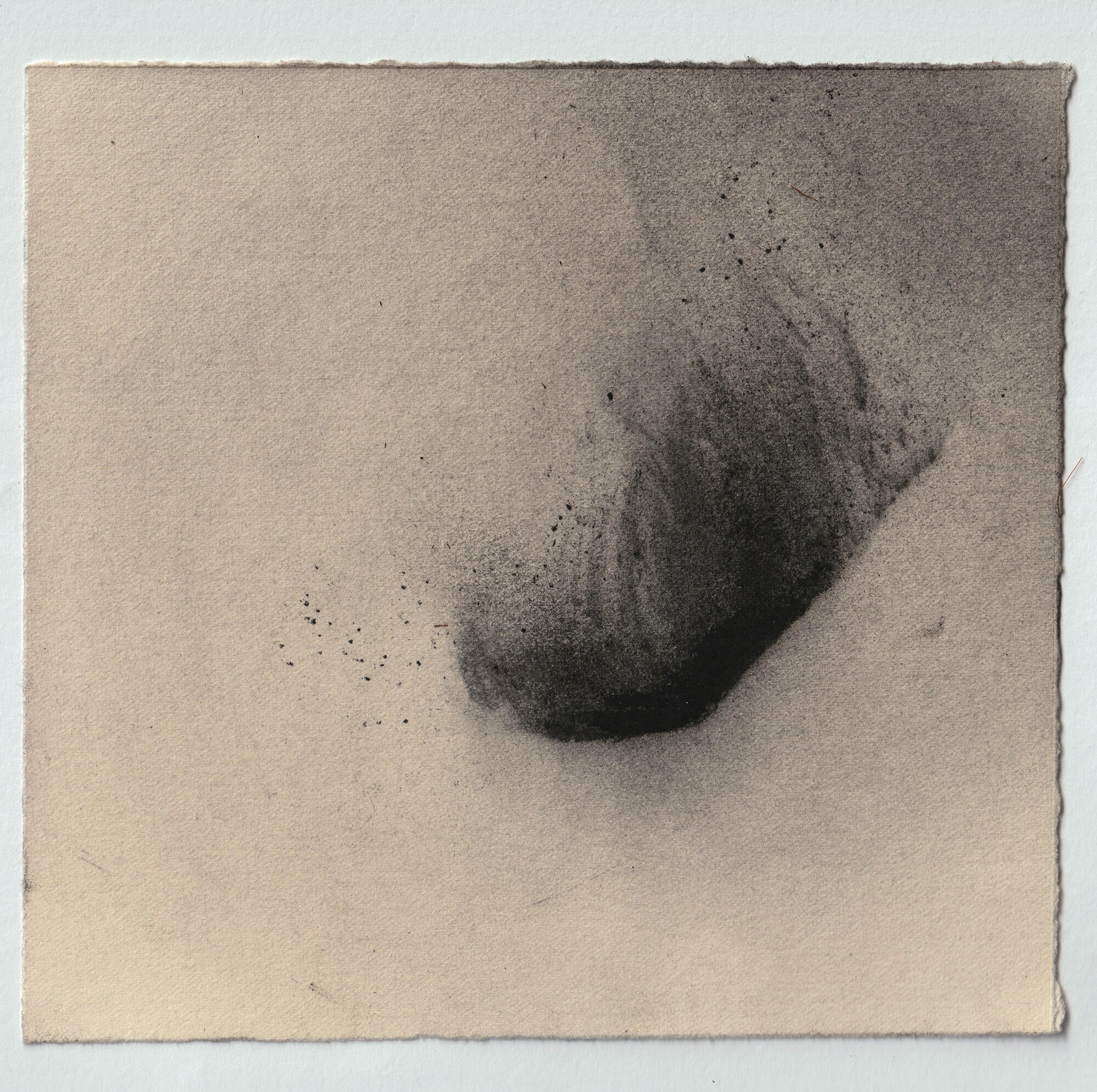
'All Storms End'
/Charcoal, paper, monotype print, glass brick elements/Exhibited in: A. and M. Miškiniai Public Library Gallery, curated by Gabrielė Šavelskytė Dates: 2024.09.03 – 2024.09.30, Utena
'Did you see the rain?'
/Video-sound artwork. Pencil, paper (digitalized drawings), sound recording/This video–sound work begins in the place where a voice has not yet formed. Thin pencil marks — repeated, layered — reach toward a feeling that flickers just out of grasp. Movements born from digitized graphite drift through the faint glow of the screen, reflecting more than they reveal.
The sound arrived earlier: a sheet of paper turning in my hands, recorded almost incidentally. Here, it returns as a small storm — a trembling, a distant rumble trying to gather shape; to warn of something about to happen. A hex, a creation — perhaps both.
Rain appears only as intuition, a substitute for experience. The lines collapse, disperse, dissolving into a fractured signal — a quiet resonance after the broadcast ends.
Some questions remain suspended. They hover at the edge of the frame — the place where a scream might have learned to begin.So. Did you see the rain?Neither have I.

